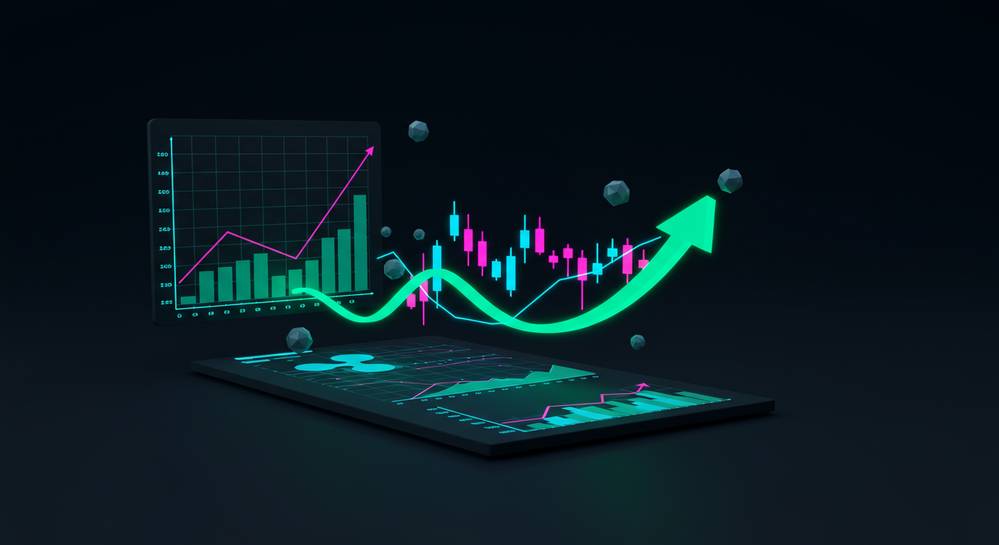Are you looking to move beyond simply buying XRP and holding it? Learning how to trade xrp profitably requires a strategic blend of analysis, risk management, and market understanding. This guide breaks down the essential techniques and knowledge you need to navigate the XRP market effectively, helping you make informed decisions to turn volatility into opportunity and build a sustainable trading approach for long-term success.
Understand XRPs unique market position

Before you trade XRP profitably, grasp its unique position. Unlike many cryptocurrencies, the value of XRP is not driven by decentralization alone. It is deeply connected to its parent company, Ripple, and its core function: enabling fast, low-cost international payments for financial institutions. This fundamental difference creates market drivers distinct from assets like Bitcoin or Ethereum.
The Ripple vs SEC lawsuit factor
The long-standing legal case between Ripple and the US Securities and Exchange Commission (SEC) remains a primary price catalyst. Favorable court rulings often trigger sharp price surges, while negative updates can cause steep declines. Therefore, profitable traders must monitor legal news as closely as price charts, as it heavily influences market sentiment and volatility.
Utility and real world adoption
Beyond legal news, XRPs fundamental value stems from its adoption. Always watch for announcements of new partnerships with banks and payment providers. Growing use of Ripples On-Demand Liquidity (ODL) service, which utilizes XRP for settlement, is a powerful bullish indicator. Tracking this real-world utility provides a solid, data-driven foundation for your trading decisions.
Apply key technical analysis strategies

Technical analysis uses historical price charts to forecast future movements. For a volatile asset like XRP, mastering a few key indicators is essential for identifying potential entry and exit points. This data-driven approach helps you make decisions based on patterns and statistics rather than emotion, which is a core part of learning how to trade XRP profitably.
- Moving Averages (MA): Use simple or exponential moving averages to determine the overall trend. A short-term MA crossing above a long-term MA, known as a Golden Cross, often signals a bullish trend. The opposite, a Death Cross, suggests a bearish outlook.
- Relative Strength Index (RSI): This indicator measures price momentum on a scale of 0 to 100. An RSI above 70 typically indicates XRP is overbought and may be due for a correction. A value below 30 suggests it is oversold and presents a potential buying opportunity.
- Moving Average Convergence Divergence (MACD): The MACD is excellent for gauging momentum. When the MACD line crosses above its signal line, it can indicate a potential buy signal, while a cross below suggests a sell signal.
Integrate fundamental analysis for a holistic view
Fundamental analysis for XRP moves beyond charts to assess the core factors driving its value. This involves a qualitative review of Ripple, its technology, and the broader economic environment. Integrating this into your strategy provides a complete market view, which is essential to understand how to trade XRP profitably over the long term.
How news and market sentiment impact price
The crypto market is highly sensitive to news and social media sentiment. Profitable traders monitor platforms like X and Telegram for key updates. Positive Ripple announcements or favorable regulatory news can create buying pressure. Conversely, negative press or FUD (Fear, Uncertainty, and Doubt) often triggers sell-offs. The ability to filter credible information from noise is a critical trading skill.
Evaluating competitor performance
XRP functions within the competitive cross-border payments industry. It is vital to monitor competitors like undefined and legacy systems like SWIFT. When Ripple secures new partnerships or demonstrates superior technology, it strengthens XRPs fundamental value. Understanding this competitive landscape helps you accurately assess its long-term potential.
Master risk management to protect your capital

The most critical element of learning how to trade XRP profitably is not how much you win, but how little you lose. Effective risk management protects your capital and ensures you can stay in the game long enough to be successful. Without it, even the best analysis can lead to significant losses.
The power of stop loss and take profit orders
A stop loss order is an instruction to sell your XRP if it drops to a certain price, limiting your potential loss. A take profit order does the opposite, selling your position when it hits a specified profit target. Using both allows you to define your risk to reward ratio before entering a trade. For example, you might risk one percent of your capital to aim for a three percent gain. This disciplined approach prevents emotional decision making during periods of high volatility.
Position sizing and portfolio diversification
Never allocate your entire portfolio to a single trade or asset. Proper position sizing means determining how much of your capital to risk on one trade, often a small percentage like one to two percent. Additionally, while focusing on XRP, ensure your overall investment portfolio is diversified across other assets. This reduces the impact if the XRP market moves unexpectedly against your position.
Successfully trading XRP is not about predicting the future but about building a robust strategy. By combining technical analysis of charts, a deep understanding of its fundamental drivers like the SEC case, and disciplined risk management, you create a powerful framework for making informed decisions. This methodical approach is the key to navigating volatility and achieving consistent results. For more expert insights, explore Solution Of Blockchain.
